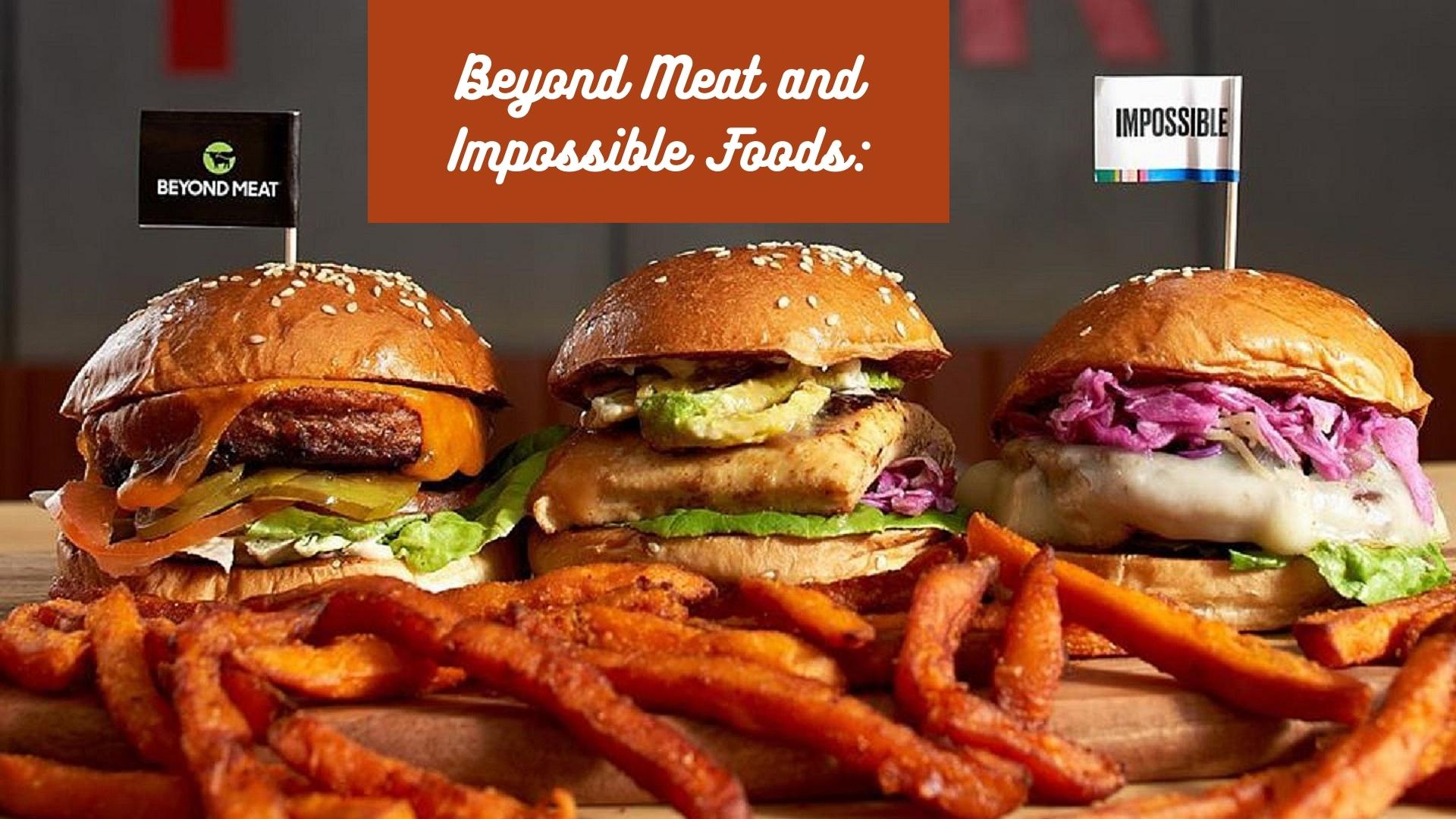Beyond Meat and Impossible Foods: The Rise of Plant-Based Protein. Over the past few years, a significant paradigm change has occurred in how individuals think about their dietary choices. Plant-based protein substitutes have been increasingly common in recent years, paralleling the rise in popularity of concerns regarding health, the environment, and the welfare of animals. Beyond Meat and Impossible Foods are two firms that have changed the food industry by inventing meat alternatives that taste, look, and cook like real Meat.
These companies are among the leaders in this movement, and they are among the frontrunners in this trend as well. In this article, we will investigate the beginnings and early successes of Beyond Meat and Impossible Foods, as well as the science that lies behind their goods, their influence on the current state of the food industry around the world, and the problems they face as they continue to expand their businesses.
The Genesis of Beyond Meat
Beyond Meat was established in 2009 by Ethan Brown to develop plant-based alternatives that mimic the flavour and consistency of animal meat. This bold concept was the impetus behind the company’s name. Brown’s drive was fueled by his concern about the adverse effects of conventional meat production on the environment and human health. He was under the impression that if he presented a workable alternative, he would be able to assist in lowering the ecological footprint left by the food business and enhancing public health.
The Science of Beyond Meat

It is possible to trace a significant portion of Beyond Meat’s success to the thorough approach that it takes to the field of food science. The company’s research and development team, which scientists and chefs directed, put much effort into analysing Meat’s molecular structure to design a new product. Beyond Meat was able to duplicate the proteins, lipids, and other components that give Meat its distinctive qualities by studying the proteins, fats, and other elements that provide flesh its distinguishing features.
The pea protein isolate used in Beyond Meat products is one of the most essential ingredients. This ingredient is a rich source of protein and, when cooked, keeps a texture similar to that of cooked Meat. Other components, like beet juice extract and coconut oil, imitate the colour of traditional Meat and the amount of fat it contains.
Beyond Meat’s Impact
Beyond Meat has witnessed unimaginable expansion ever since it first opened its doors. The initial public offering (IPO) that Beyond Meat held in 2019 was a tribute to the company’s success, as the company’s shares skyrocketed on the first day of trading.
Additionally, Beyond Meat has made significant progress toward resolving environmental issues. Traditional animal farming results in much more greenhouse gas emissions and requires significantly more land and water compared to the production of plant-based foods. The potential for Beyond Meat products to positively influence the environment expands as more consumers pick these products.
The Emergence of Impossible Foods
Impossible Foods, established in 2011 by Dr. Patrick O. Brown, has the same goal as Beyond Meat: to develop meat substitutes made from plants indistinguishable from real animal flesh. Dr. Brown, who had previously taught biochemistry at Stanford University, was interested in developing novel approaches to food science to address the environmental issues connected to Meat production.
The Science of Impossible Foods
The method that Impossible Foods uses to imitate Meat involves the use of a chemical known as heme. Heme is found in high concentrations in the muscle tissue of animals and is responsible for Meat’s distinctive flavour and scent. The research group led by Dr Brown found that they could mimic the umami flavour found in Meat by using genetically engineered yeast to make plant-based heme.
This heme-rich component is essential to producing the company’s main product, the Impossible Burger, which delivers customers a luscious and satisfyingly meaty experience. In the same vein as Beyond Meat, Impossible Foods creates an effect that simulates the consistency of regular Meat by using proteins derived from plants, such as soy and potato. The end product is a burger with beef’s sound, smell, and taste without the associated environmental and ethical considerations.
Impossible Foods’ Impact
Impossible Foods’s introduction to gastronomy was hailed as a success by critics and consumers alike. Plant-based choices have been added to the menus of prominent fast-food restaurants thanks to the company’s cooperation with eateries like Burger King, which further solidified its place in the market. Since then, the company’s product line has grown to include other types of Meat, such as ground meat, sau, sages, and burgers.
The company eliminates the massive amounts of land, water, and feed required for conventional cattle production by developing plant-based alternatives to meat products. In addition to this, it reduces greenhouse gas emissions, positively contributing to the effort to combat climate change.
The Global Plant-Based Protein Market

Beyond Meat and Impossible Foods represent a more significant movement in the food sector, which is the explosive expansion of the market for plant-based proteins. Consumers are becoming more aware of their food choices’ environmental and health effects. As a result, they are looking for alternatives to traditional products based on animals. As a result of this shift in customer preferences, a burgeoning industry has emerged, which is drawing start-ups in addition to existing food corporations.
Market Expansion
Following in the footsteps of Beyond Meat and Impossible Foods, several other companies have launched similar products to replicate their success. Several large food firms have joined the market with their products due to their recognition of the potential of plant proteins. This increase in competition has led to more innovations and a broader availability of items derived from plants in supermarkets and restaurants worldwide.
Health and Environmental Benefits
The widespread belief that food derived from plants is more beneficial to one’s health and friendlier to the environment is one of the leading forces behind the industry’s rapid expansion. The fact that plant-based meats are typically lower in saturated fats and cholesterol makes them appealing to consumers concerned about their health. In addition, creating these goods results in a lower ecological footprint, consistent with the growing concern regarding climate change and sustainable practices.
Challenges and Controversies
Despite its success, both Beyond Meat and Impossible Foods have been subject to various criticisms and debates. Others have expressed reservations regarding genetically modified organisms (GMOs) in producing these goods, even though scientific communities have reached a near-universal agreement that GMOs are safe for human consumption.
In addition, the traditional cattle and meat industries pose a challenge for the plant-based meat sector, which competes with their products. As the meat business has become more concerned with guarding its interests and reputation, it has increased its involvement in lobbying activities and legal conflicts.
Conclusion
The ascent of companies such as Beyond Meat and Impossible Foods signifies a massive shift in how we think about the future of food and protein specifically. These companies have developed meat substitutes that are both palatable and environmentally friendly, igniting a global movement toward the use of plant-based foods. Consumers will continue to want solutions that are both healthier and less harmful to the environment. Even if obstacles and debates still exist, the fact that companies like Beyond Meat and Impossible Foods have been so successful demonstrates that people worldwide are hungry for change, one plant-based meal at a time.
